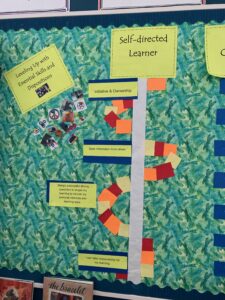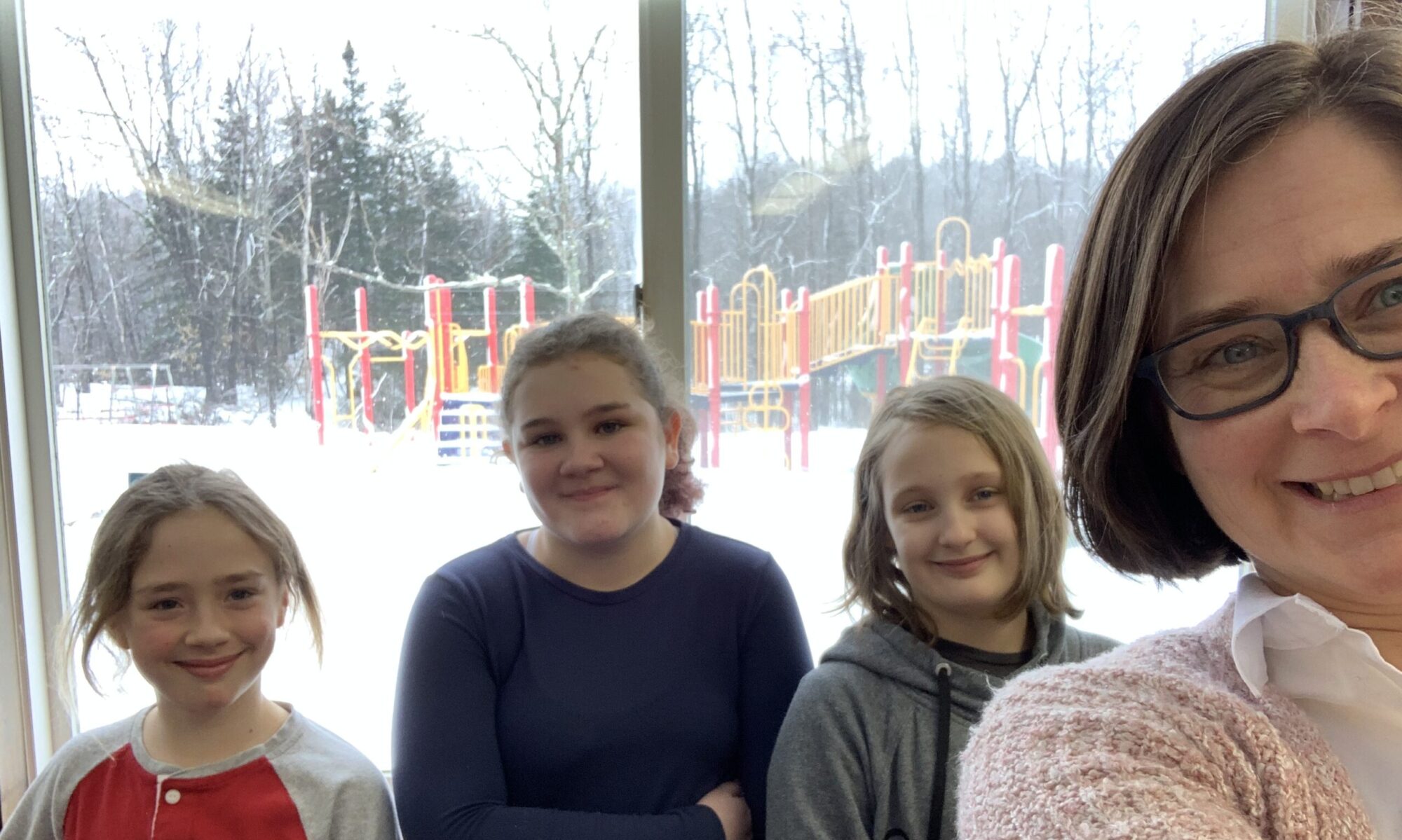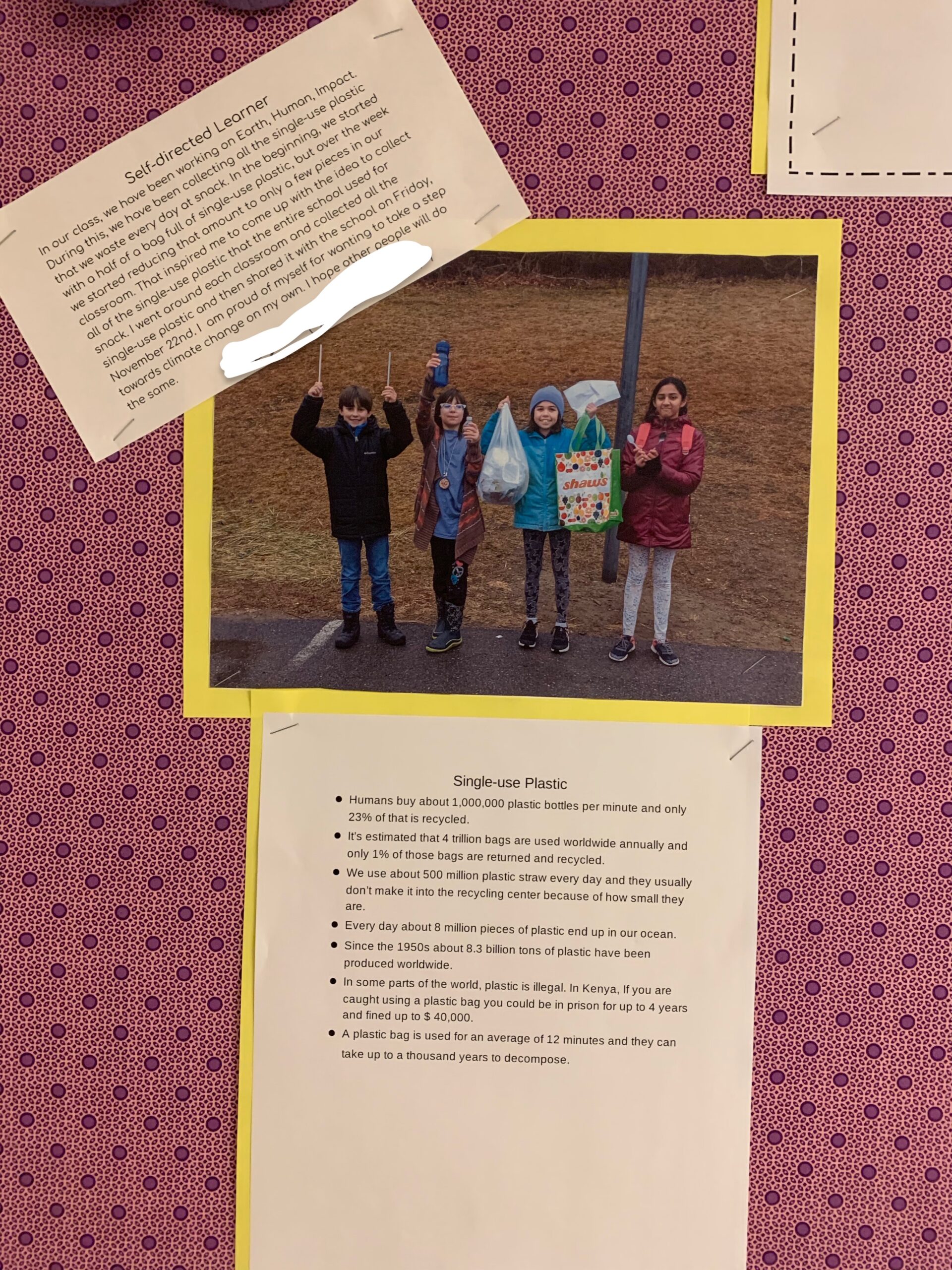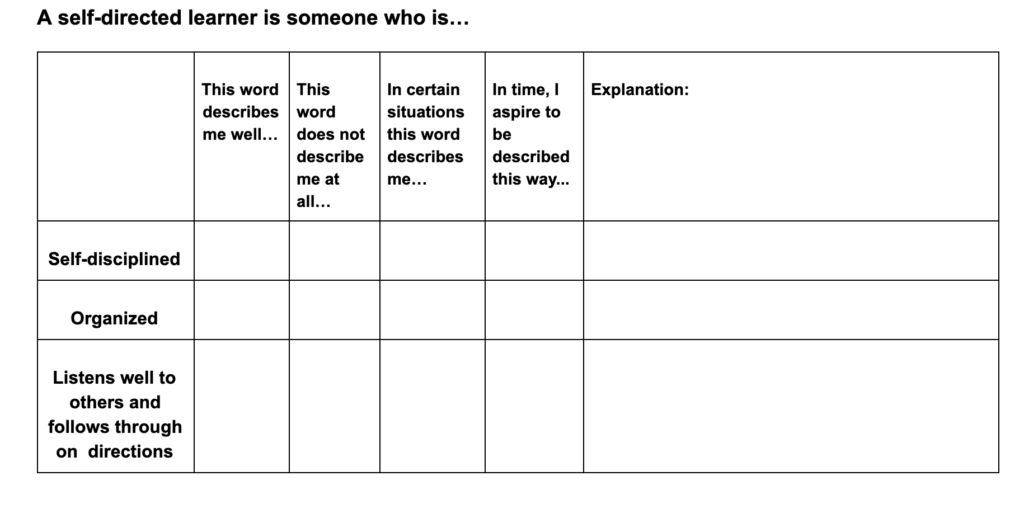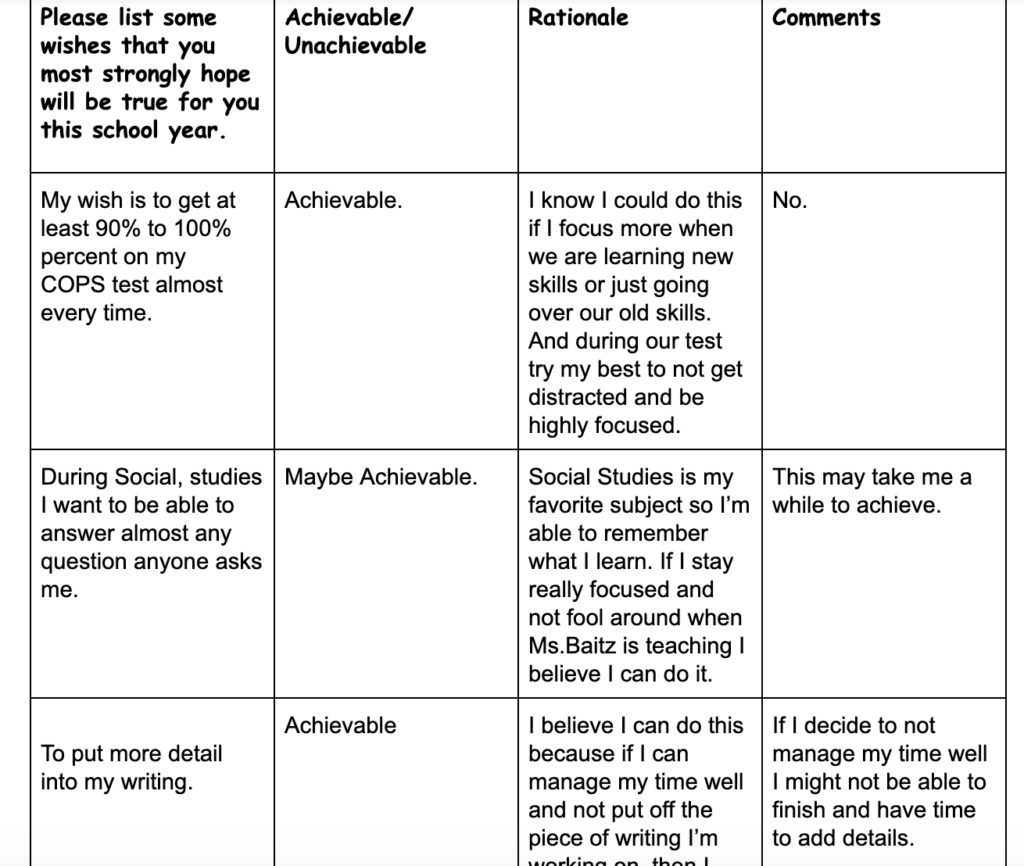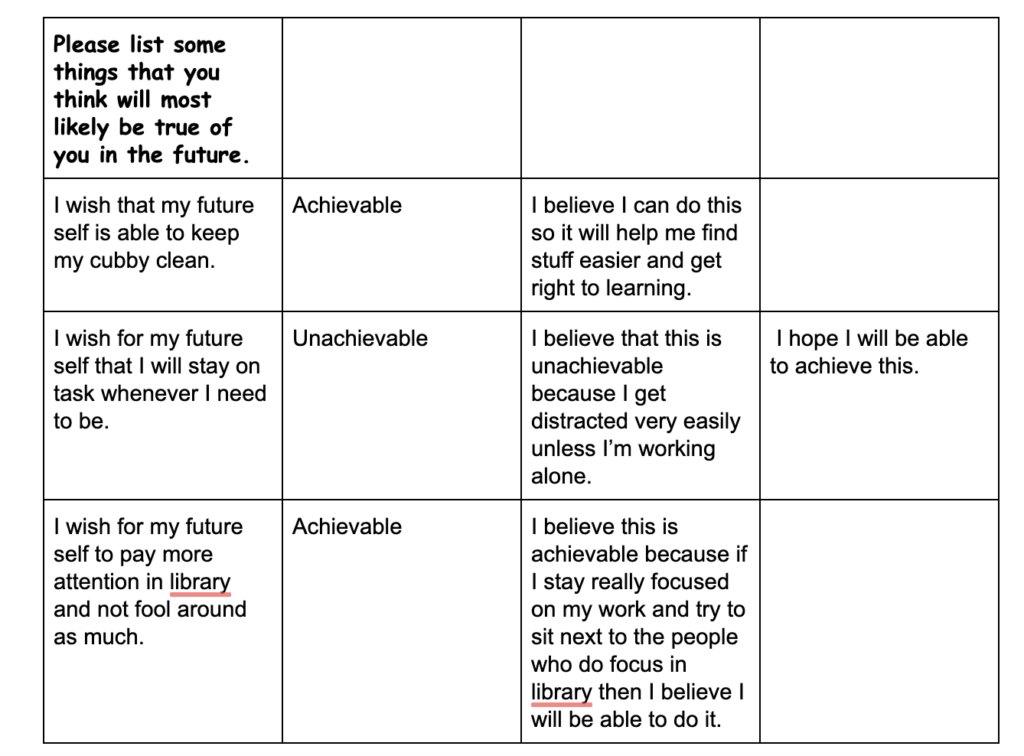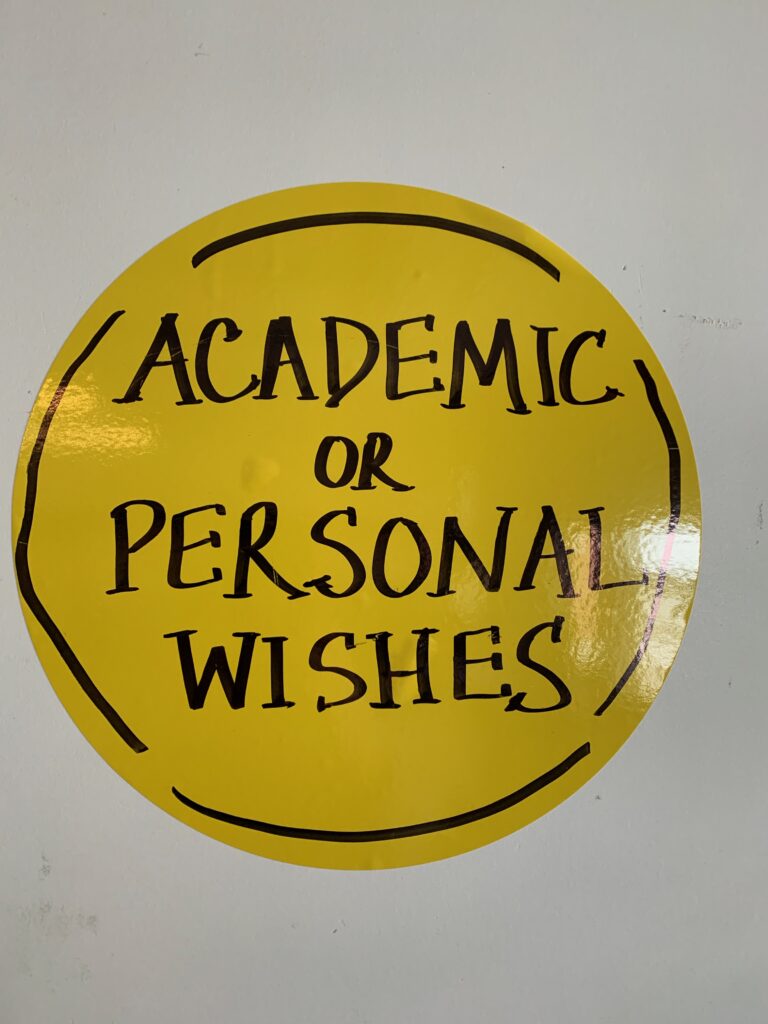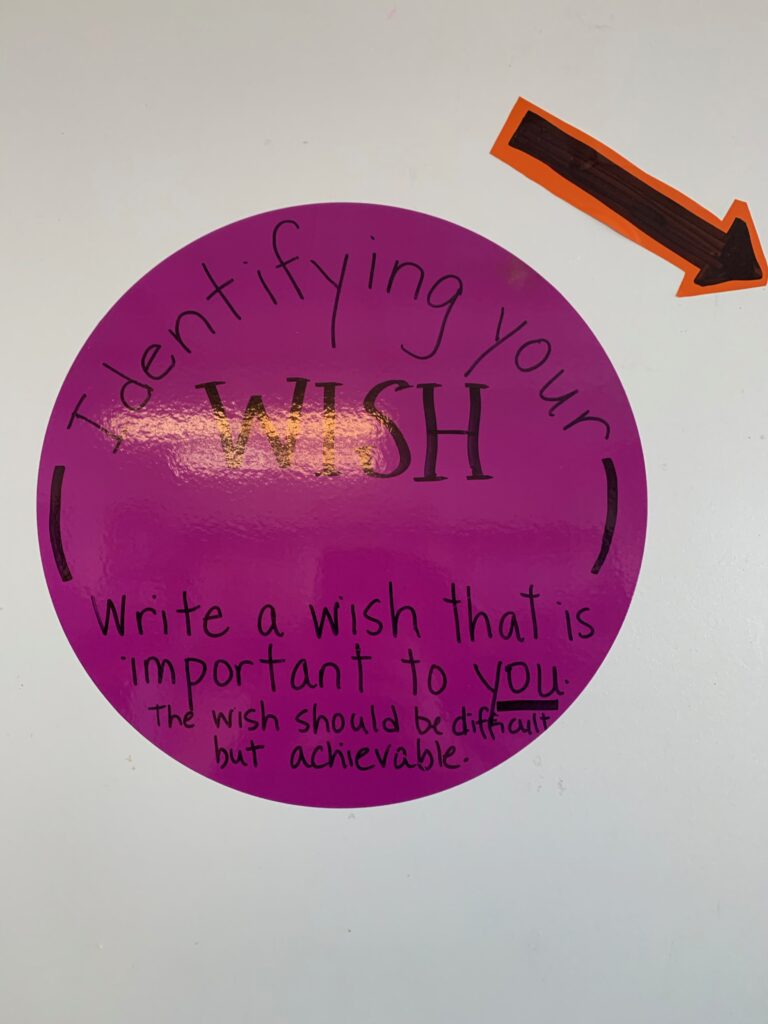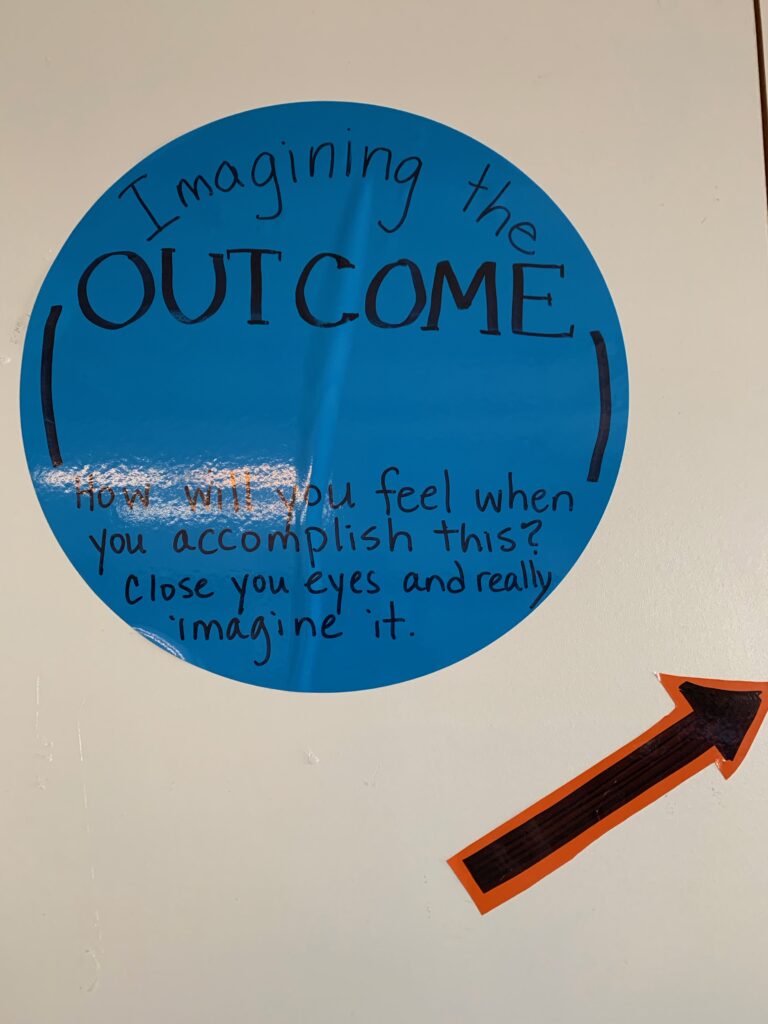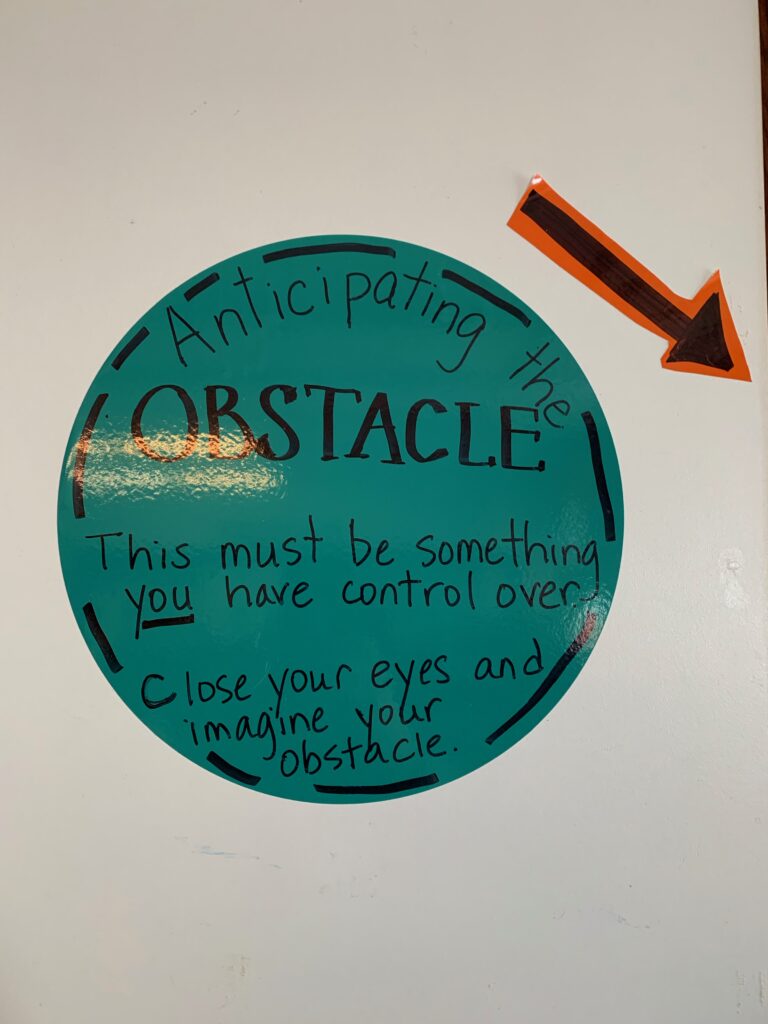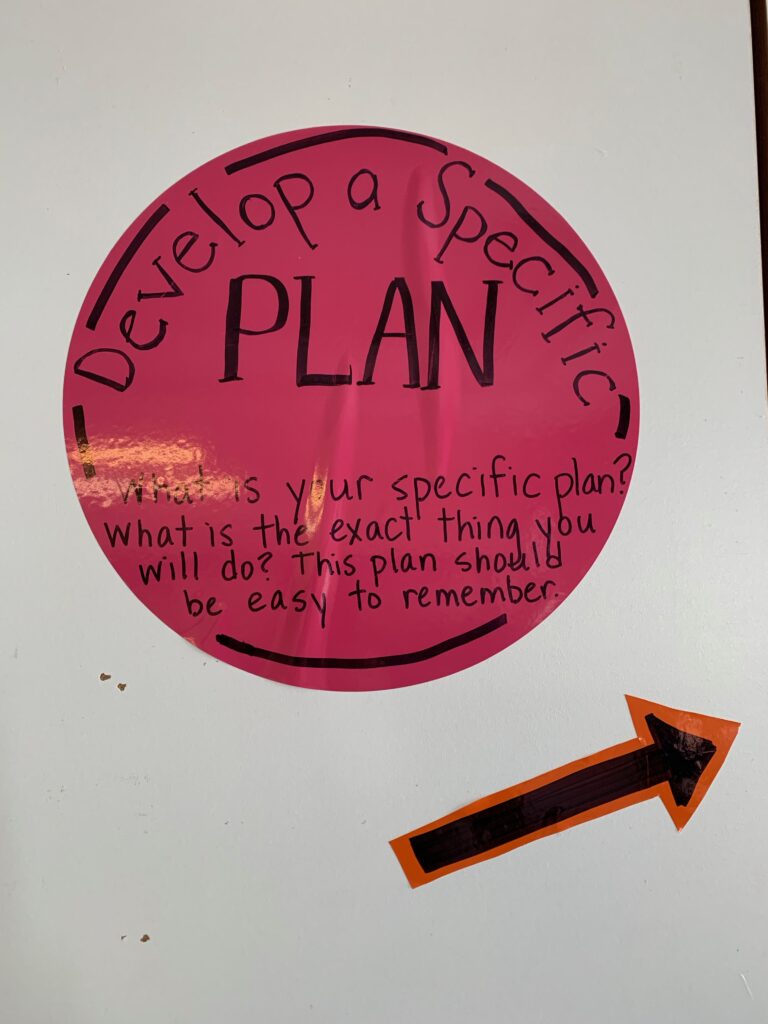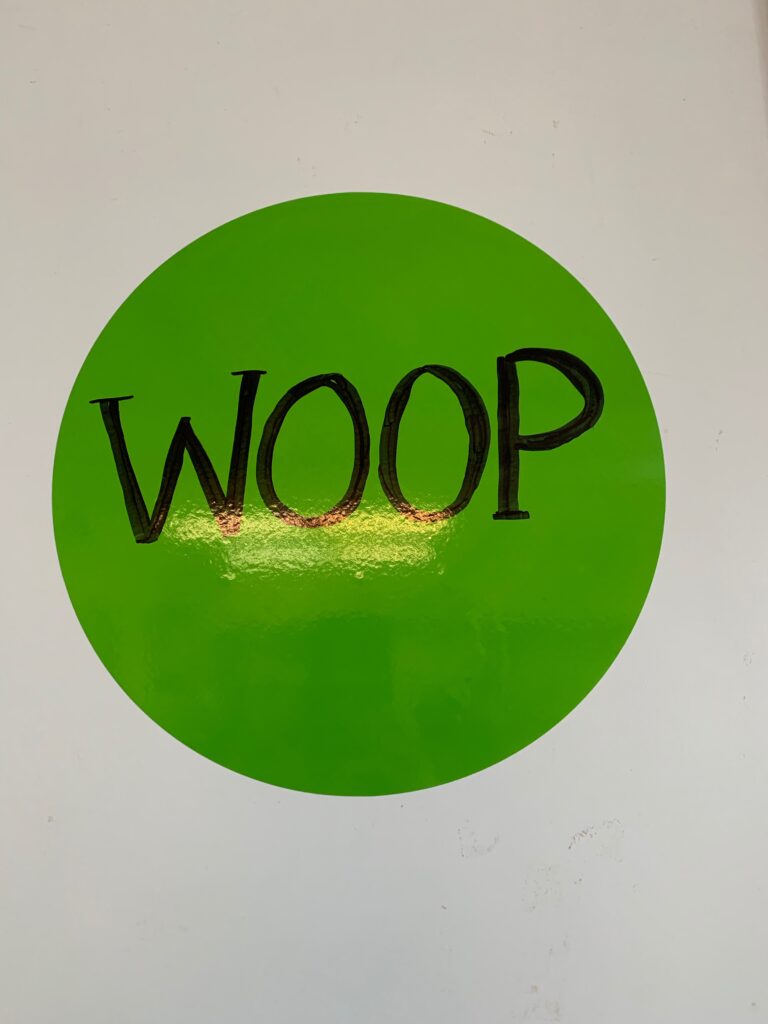I’m going to be honest with you, writing this blog post about self-direction has taken, well, a lot of self-direction. I’m a busy person with agendas to develop, meetings to attend, reading to do… and it’s been really easy to put other work ahead of this post. What’s a Professional Development Coordinator to do?
I’m well versed in the language of the transferable skills and I know that self-direction requires taking initiative, managing learning goals, and persevering when the going gets tough. But somehow, those concepts weren’t helping me.
So I’m going to take some lessons from the 6th graders at Ludlow Elementary School. They’ve been building self-awareness around self-direction under the guidance of their teacher, Heidi Baitz.
First, some context
Ludlow Elementary and the entire Two Rivers Supervisory Union have adopted the Essential Skills and Dispositions framework as their transferable skill model.
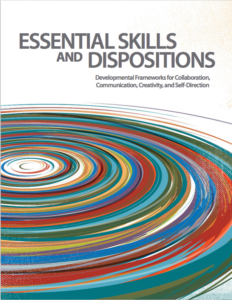
Authors: Sarah Collins Lench, Erin Fukuda, and Ross Anderson.
This framework targets four skills: Communication, Collaboration, Creativity, and Self-Direction, and goes into great depth into the components, development, and interpersonal and intrapersonal nature of the skill in action.
Here are the components of Self-Direction:
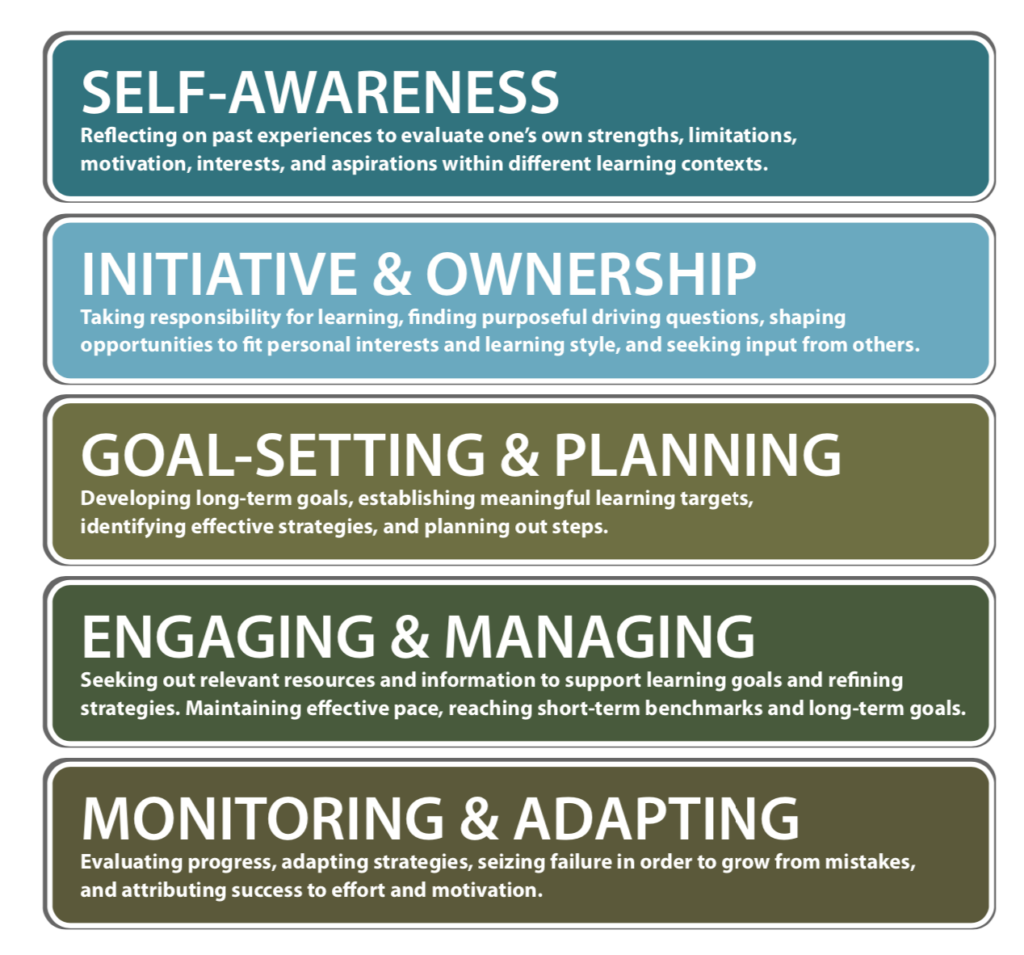
It’s a complicated framework that takes some time to fully understand and actualize. And while these are not meant to be linear, self-awareness is a great entry point.
Starting with self-awareness (and then self-direction)
While self-direction seems like something students would have to do alone, Heidi began with the whole group in order to scaffold the learning: reflecting as a group on elements of self-direction before moving to individual reflections. And she wanted to make this process visible, so she made a class game board to monitor their progress.
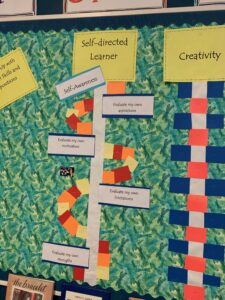
Students chose an image to represent themselves and they chose a collective image to represent the class. As they developed self-awareness they moved their pieces up the path.
Reflecting on strengths and limitations
The class began with a strengths-based approach, asking the group to reflect on their work and identify their strengths as a class. At the end of a learning activity she would ask them:
- What are our class strengths?
- When do we do our best work?
These students are great at hands-on learning. Opportunities to move their bodies help them do their best learning. And they learn well when the expectations are clear.
Strengths go hand in hand with limitations, and she allowed the class opportunities to reflect on these as well:
- What are our challenges?
- When did we struggle or lose focus?
When students have side conversations or talk over each other, they lose focus and don’t learn as well. A little silliness is okay, but a lot of silliness makes it hard for the group to learn together. And if they aren’t interested in the work at hand, it is hard to stay engaged.
After many opportunities to debrief their learning in this way, the class had a pretty thoughtful list of strengths and limitations AND they were familiar with how to reflect in this way. Their new skills in group-awareness could be applied to themselves – they were ready to reflect on their own personal strengths and challenges.
I’m ready to reflect on mine too! My limitations: I struggle with writing a first draft. Getting words on the page is the first step for me, but I agonize over choosing the right ones. My inner critic won’t let me be! And my strengths: I compose best when I’m moving: walking, running, cross country skiing. As I move my body my thoughts flow. And I benefit from a thought partner, someone to think aloud with.
When it comes to self-directed learning, what are your strengths and limitations?
Moving from self-awareness to evaluation
After Heidi’s students reflected on their personal strengths and challenges, Heidi asked them to evaluate themselves on specific skills self-directed learners practice:
This focused their attention on the specific areas they can leverage in their learning and on those they might seek to improve.
Intrapersonal AND interpersonal
Remember how the Essential Skills and Dispositions framework focuses on the intrapersonal as well as the interpersonal? Heidi asked her students to do this too by sharing their strengths and limitations within the learning community. They each hold a piece of the classroom puzzle, learning from each others’ strengths and offering support for growth. Students shared their self-reflections in the form of puzzle pieces.
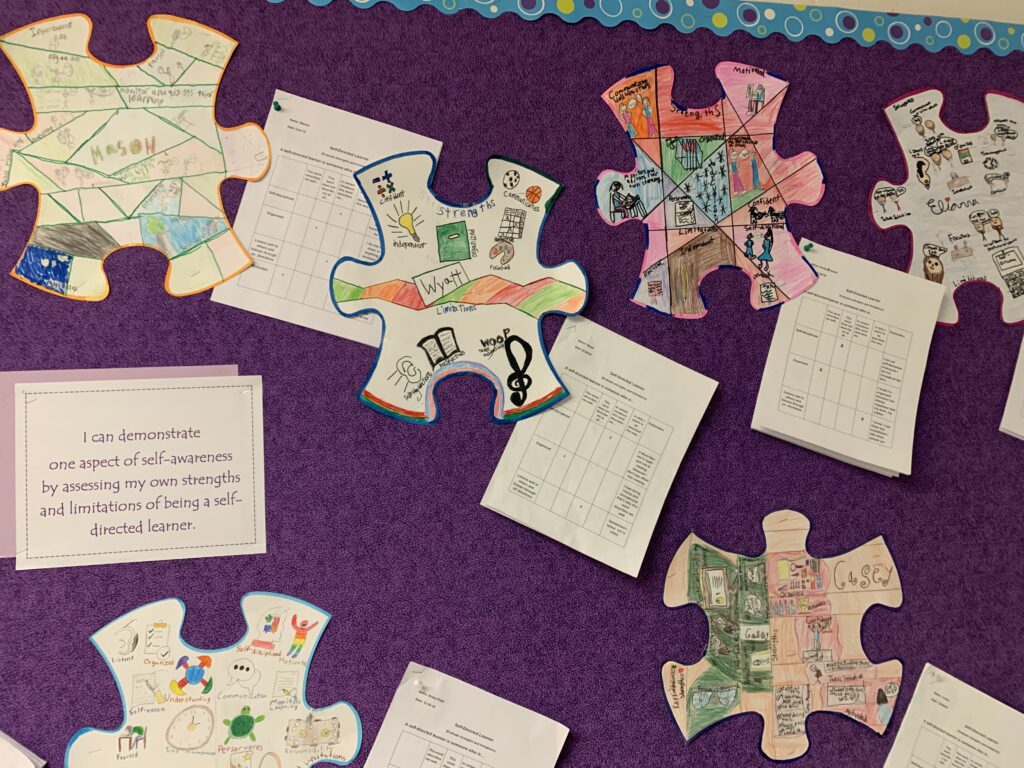
Another lesson for me from these 6th graders: when you face your own limitations, reach out to someone with strengths in those areas. I asked a friend with a strong blog writing voice (looking at you Emily Hoyler) to talk through my ideas for this post and get some feedback. And it worked!
Who do you look to for support when you face a limitation?
Identifying motivations
Now that her students were aware of their strengths and limitations, Heidi moved them to reflect on what drives them to learn. Again, starting as a class before moving to individual work, they brainstormed the things that motivate them. Curiosity, recess, grades, a sense of accomplishment, getting to go outside… they were motivated by a wide range of things.
As a class, they sorted these into different categories, and they did the same for their personal motivations. One student found that he could group his motivations into two categories: inside motivators and outside motivators. Another student sorted hers by whether they are things she experiences alone or with others.
This sorting process was another step on the scaffold to deeper understanding.
After Heidi introduced the class to the concepts of intrinsic motivation and extrinsic motivation, they sorted their motivators into these categories as well.
What motivates me to write this blog post? Several things! I’m excited to share the interesting work Heidi and the 6th graders at Ludlow Elementary School are doing. And I find it satisfying to organize my thinking in a way that others can understand. Perhaps someone will give me a prize, too? Just kidding, I’m all about the intrinsic motivation of doing my best to show off the important work of Vermont teachers!
What motivates you?
Aspirations for the win!
Ludlow Elementary 6th graders had done a ton of reflecting. Now they were ready to aspire! (Don’t you just love to aspire? I do!) Again Heidi began with some group work: brainstorming aspirations and thinking out loud about whether or not these aspirations were achievable.
Personally, I aspire to be as awesome as Lizzo. Winning a Grammy for a singing performance seems highly unachievable given my fear of singing in public. On the other hand, being an outspoken LGBTQ+ ally is achievable if I educate myself and speak up in the face of homophobia and transphobia. But, back to our 6th grade mentors…
Students used their self-awareness to dream big! They evaluated their aspirations and created a rationale to explain why they were or were not achievable. Here is an example:
And what do I aspire to, besides being more like Lizzo? I aspire to helping teachers develop educatoinal practices that help ALL students learn and grow. And also to be better about meeting my deadlines…
What do you aspire to?
WOOP there it is!
All of this reflection on self-direction has led to some pretty self-aware students. And self-aware students are primed for goal setting. Heidi’s students are using WOOP goals to identify their Wishes, Outcomes, Obstacles, and Plans.
They are creating goals and plans that are informed by their evaluations of their aspirations, strengths, challenges, and motivations. Now that is self-direction!
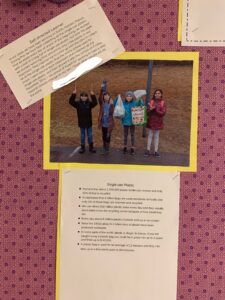
As for me, my wish was to write a coherent blog post about self-direction. I’m grateful to Heidi’s students for providing these examples, but also for helping me to identify my obstacles and develop a plan to meet that goal.
What do you wish for?
Fostering self-direction is a process
Self-directed learners leverage so many skills: taking responsibility for learning, setting and managing goals, developing strategies that help them learn, taking initiative, channeling their motivation… Self-awareness is critical to their ability to do these things. Developing awareness of strengths and limitations, interests and motivations, dreams and aspirations is an ongoing process, one that contributes to the ability to demonstrate self-direction in and out of the classroom.
How are you fostering self-awareness in your classroom?
As for Heidi Baitz’s 6th graders, their next area of focus is on Initiative and Ownership, and I’m certain they will continue to grow their self-awareness as they reflect on these aspects of self-direction.
